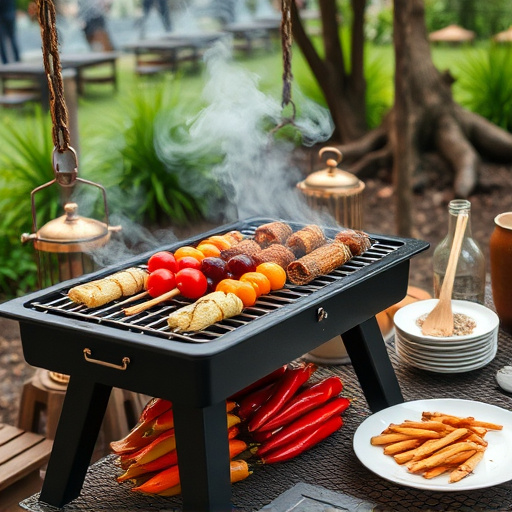Choosing the right cut of baby back or spare rib meat with good marbling is essential for juicy, tender smoked BBQ ribs. Source fresh ribs from reputable providers and store properly. Brining beforehand enhances flavor and tenderness, requiring several hours to overnight immersion in a salt, sugar, and spice mixture. Smoke ribs at 225°F-250°F (107°C-121°C) using wood chips for aroma and moisture, basting regularly with BBQ sauce. Create a signature rub blend of salt, pepper, garlic, paprika, and personal touches to infuse flavor during smoking. Slow cook ribs in a low-temperature slow cooker or smoker for 8-10 hours until tender. Serve with complementary sides like mashed potatoes, corn on the cob, crispy onions, coleslaw, or fresh salads to balance the rich flavors. Maintain consistent heat, aim for an internal temp of 195°F (90°C), and rest ribs after cooking for optimal results.
“Indulge in the ultimate comfort food experience with perfectly smoked BBQ ribs—tender, flavorful, and oh-so-satisfying. This comprehensive guide takes you on a journey from choosing the best ribs to mastering the art of brining, smoking, and seasoning. Learn techniques for even cooking and flavor infusion, plus discover the perfect side dishes to complete your culinary masterpiece. Whether you’re a seasoned BBQ pro or just starting out, this smoked BBQ ribs recipe is sure to impress.”
- Choosing the Perfect Ribs for Smoked BBQ: Tips for Selection and Quality
- The Art of Brining: How to Prepare Your Ribs for Smoke and Tenderness
- Mastering the Smoking Process: Techniques for Even Cooking and Flavor Infusion
- Seasoning and Rubs: Creating Your Signature Blend for Smoked BBQ Ribs
- Slow Cooking for Tenderness: A Step-by-Step Guide to Achieving Meltingly Soft Ribs
- Serving Suggestions: Accompanying Side Dishes for the Ultimate Comfort Food Experience
- Tips for Perfection: Common Mistakes and Troubleshooting for Smoky, Tender Ribs
Choosing the Perfect Ribs for Smoked BBQ: Tips for Selection and Quality
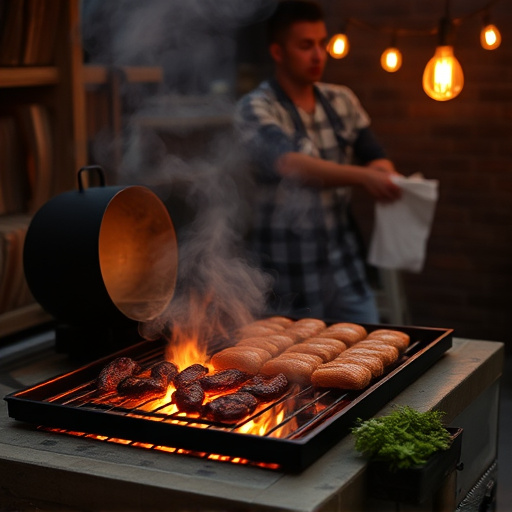
When it comes to smoked BBQ ribs recipes, choosing the right cut is half the battle won. Opt for baby back or spare rib meats, known for their tender texture and rich flavor profile after smoking. Look for cuts with a good marbling of fat, as this contributes significantly to the meat’s juiciness and keeps it from drying out during the slow-cooking process. Quality is paramount; select ribs that are meaty, with a thin layer of membrane on the bone side, which can be easily peeled off after cooking. Freshness is key; purchase from reputable sources to guarantee prime rib cuts, ensuring an exceptional smoked BBQ ribs recipe result.
Consider the source and age of the ribs. Younger animals generally produce more tender meat, so look for locally sourced options if possible. The smoking process enhances flavors, but high-quality ribs will still taste delicious even without it. Check for any signs of damage or discoloration, and always store them properly in the refrigerator to maintain freshness before cooking your smoked BBQ ribs recipe.
The Art of Brining: How to Prepare Your Ribs for Smoke and Tenderness
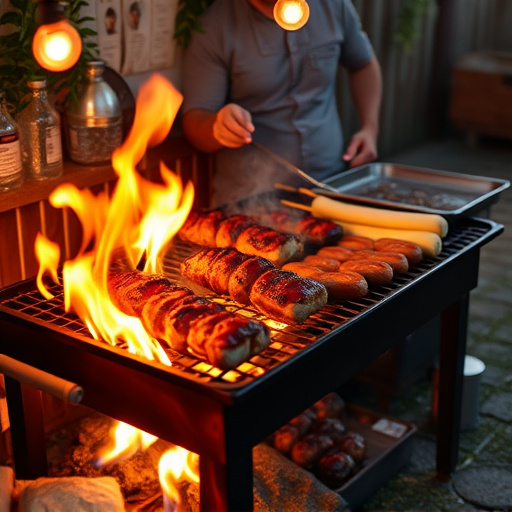
The process of brining is an art that can elevate your smoked BBQ ribs recipe to a whole new level. Brining involves submerging your ribs in a solution of salt, sugar, and various spices for a period of time before cooking. This technique not only enhances the flavor but also helps to break down tough connective tissues, ensuring your ribs turn out incredibly tender when smoked.
By brining your ribs, you create an environment that draws out moisture from the meat, replacing it with the flavorful brine. This process can take anywhere from a few hours to overnight, depending on the size of your ribs and desired tenderness. The result is a mouthwatering dish where the smoke flavor infuses every bite, leaving your taste buds craving more.
Mastering the Smoking Process: Techniques for Even Cooking and Flavor Infusion
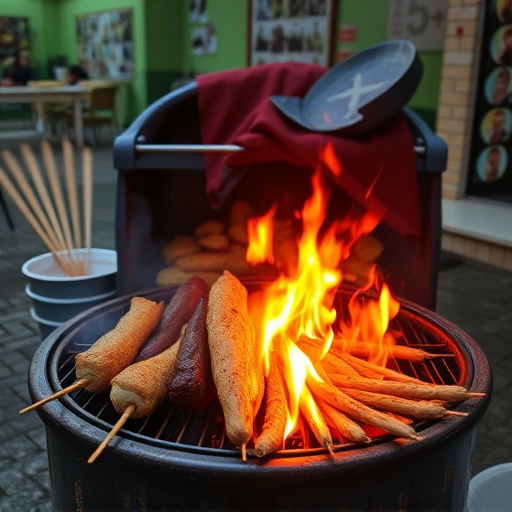
Mastering the smoking process is an art that transforms simple ingredients into mouthwatering culinary delights, especially when it comes to crafting the perfect smoked BBQ ribs recipe. The key lies in understanding even cooking and flavor infusion techniques. This involves carefully controlling temperature and smoke exposure for consistent results.
Start by preheating your smoker to the desired temperature, typically between 225°F and 250°F (107°C to 121°C). This slow cooking allows the meat to break down, ensuring tender ribs without overcooking or drying them out. Infuse flavors by using a combination of wood chips or chunks, such as hickory, mesquite, or applewood, for a smoky aroma and subtle sweetness. Regularly baste the ribs with your favorite BBQ sauce or a simple glaze to add moisture and enhance the taste profile during the smoking process.
Seasoning and Rubs: Creating Your Signature Blend for Smoked BBQ Ribs
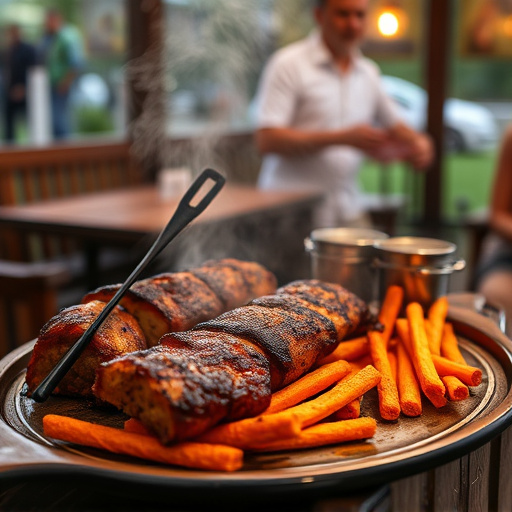
Creating your signature blend for smoked BBQ ribs is an art that combines science and taste preferences. Start by considering the classic combinations of salt, pepper, garlic, and paprika. These four ingredients form a solid foundation for many smoked meat recipes, offering both flavor and depth. Experiment with different ratios to find the perfect balance that suits your palate. For instance, increase the garlic for a pungent kick or add more smoked paprika for a rich, smoky aroma.
A rub is the secret weapon in any smoked BBQ ribs recipe. It’s what infuses the meat with flavors during the smoking process. Consider adding dry ingredients like brown sugar or maple syrup for a sweet twist, or incorporate chili powder and cayenne pepper for heat lovers. The key is to customize your rub based on personal preferences while ensuring it complements the natural flavors of the ribs. With practice, you’ll develop a signature blend that makes your smoked BBQ ribs stand out.
Slow Cooking for Tenderness: A Step-by-Step Guide to Achieving Meltingly Soft Ribs
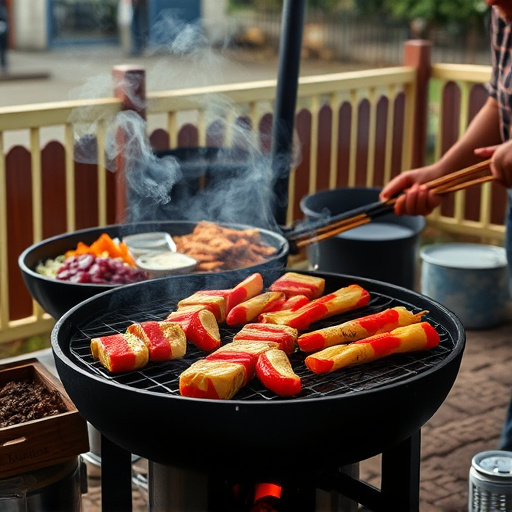
To achieve meltingly soft smoked BBQ ribs, nothing beats the magic of slow cooking. This method allows the meat to break down gradually, resulting in tender, succulent ribs that practically fall off the bone. Here’s a step-by-step guide for perfection:
1. Prepare Your Ribs: Start with a good quality rack of baby back or spare rib meat. Remove any membrane on the bone side and rub your ribs generously with your favorite dry rub spice mix. This step enhances flavor and helps to keep the ribs moist during the slow cooking process.
2. Slow Cooker Setup: Place the ribs in your slow cooker, bone-side down. Add a half cup of water or broth to prevent dryness. The liquid not only adds moisture but also creates steam, keeping the ribs tender. Set your slow cooker on low and let it do its thing for 8–10 hours, or until the meat is incredibly soft and easily pulls away from the bone.
Serving Suggestions: Accompanying Side Dishes for the Ultimate Comfort Food Experience
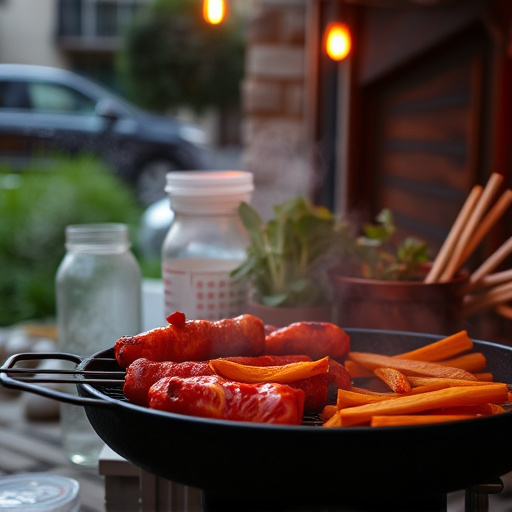
When serving your smoked BBQ ribs, think beyond just the meat itself. The ultimate comfort food experience involves a thoughtful selection of sides that complement and enhance the rich, smoky flavors. Consider classic comfort dishes like creamy mashed potatoes or buttery corn on the cob for a simple yet satisfying combination. For added texture and depth, pair them with crispy fried onions or a tangy barbecue sauce dip.
For a heartier meal, include a generous serving of garlic bread or coleslaw. These sides not only balance the flavors but also provide a variety of textures that make each bite more delightful. Don’t forget about fresh salads to cut through the richness, offering a crisp contrast to the tender, smoked ribs—a perfect blend of comfort and freshness.
Tips for Perfection: Common Mistakes and Troubleshooting for Smoky, Tender Ribs
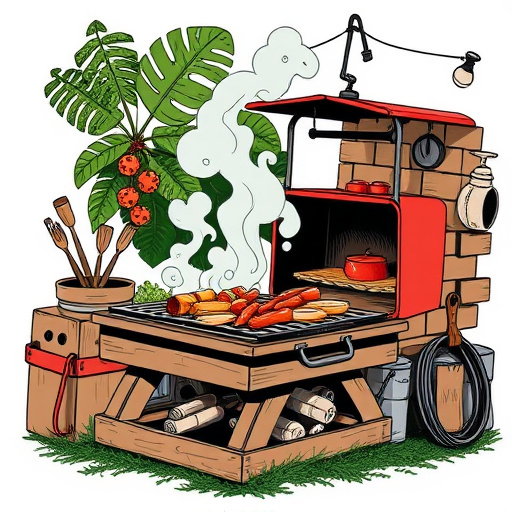
Achieving perfection in smoking BBQ ribs requires a balance of time, temperature, and technique. A common mistake is undercooking; ensure your ribs reach an internal temperature of 195°F (90°C) for tender meat. The smoke ring—a beautiful crimson layer just below the skin—is a sign of success, not a flaw. Don’t be tempted to rush the process; slow and steady wins the race.
Troubleshooting tips include checking your smoker’s temperature regularly and maintaining consistent heat. If ribs feel dry during cooking, wrap them in butcher paper for the last hour to prevent over-smoking. Remember, patience is key—letting them rest after smoking allows the juices to redistribute, ensuring every bite is mouthwatering.
